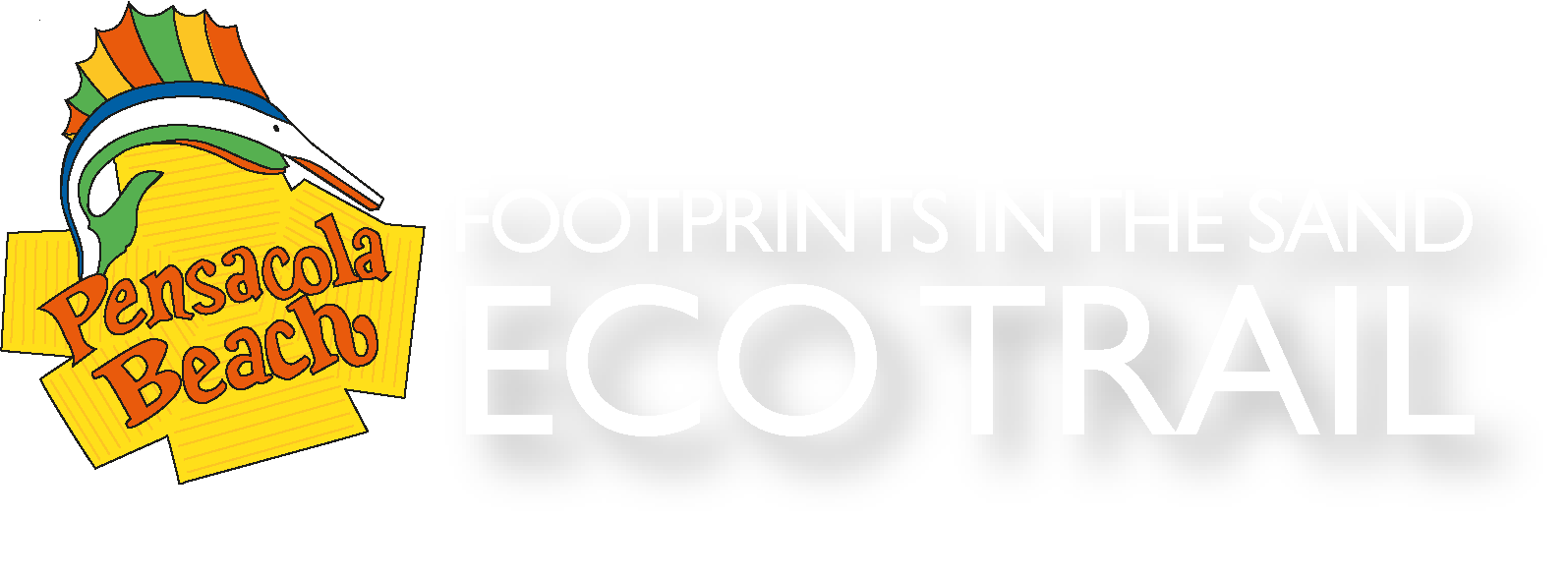Pensacola Beach Sunset © Lisa Murphy
DUNES & TRANSITIONS
Barrier islands in the Gulf of Mexico have a predictable landscape based on proximity to the water. The open beachfront where most visitors spend their time is essentially devoid of plant life. However, incoming waves will wash up and deposit dead plants, shells, algae, seeds, driftwood, and trash at the high tide line. This collection of material is called wrack. While it may look messy, the wrack line holds significant value to the ecosystem and should not be removed (except for the trash, of course!). Wrack can collect drifting seeds and give them a protected area to take root, and the decaying material in wrack provides nutrients and moisture to these plants.
.
Soundside Wrack Line
Moving away from the open beachfront and water are the primary dunes. Formed by sand blown in from the beach, primary dunes are the first line of defense against hurricanes for islands and inland communities. Populated by hardy plants tolerant of heat, dry soil, salt, and constant wind, the resilient primary dunes tolerate the most difficult conditions of island life. See Plant section for more on what grows on the island. A healthy dune system allows more stable and diverse communities of plants and wildlife to thrive on the leeward side of the island. While sea oats and other dune grasses do a great job stabilizing the dunes, they are still built on shifting sand. Repeated impacts from people walking over the dunes can destroy this delicate system and leave the island vulnerable to larger impacts from storms. It is imperative that beach visitors use designated walkovers to protect dunes.
I © I
Rippled Sand And Dunes © Donna Bottcher
Beyond the primary dunes, vegetation downslope is protected from the onslaught of constant wind and salt spray, and larger plants can take root. A “scrub” habitat of drought-tolerant grasses, shrubs and low-growing trees will form the secondary dunes. With a more stable plant community forming natural compost, the soil here contains more organic material and nutrients to support the growth of larger plants. Further inland from the secondary dunes are tertiary dunes, which may support a mature forest of sand live oaks and pines.
.
Heron In Salt March






